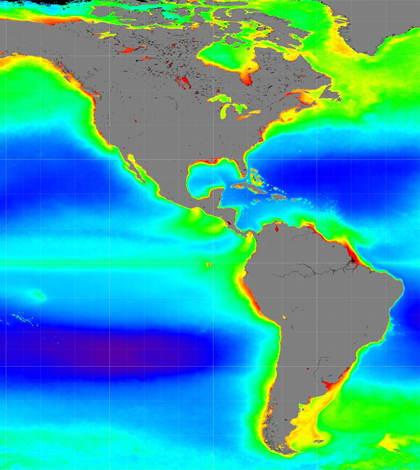NASA Mission to Study Ocean Color

Global ocean color observation with the SeaWIFS satellite sensors. (Credit: NASA)
A new mission conducted by NASA’s Goddard Space Flight Center will measure the effects that airborne particles such as dust, smoke and aerosols have on the world’s ocean health, fisheries and carbon cycle.
The mission, slated to begin in 2022, will study phytoplankton and their response to climate change using satellite technology. According to NASA, phytoplankton living close to the ocean’s surface produce at least half of the oxygen on Earth and form the base of the marine food chain, making them the perfect subject for this global mission.
NASA will build a color sensor, allowing scientists to see colors of the ocean from ultraviolet to near infrared. Changes in the ocean color may indicate algal blooms or ocean acidification. This technology will help them to obtain more accurate measurements of biological and chemical ocean properties, such as the biomass and composition of phytoplankton communities.
“Knowing more about global phytoplankton community composition will help us understand how living marine resources respond to a changing climate,” Jeremy Werdell, Goddard scientist, said.

Global ocean color observation with the SeaWIFS satellite sensors. (Credit: NASA)




0 comments